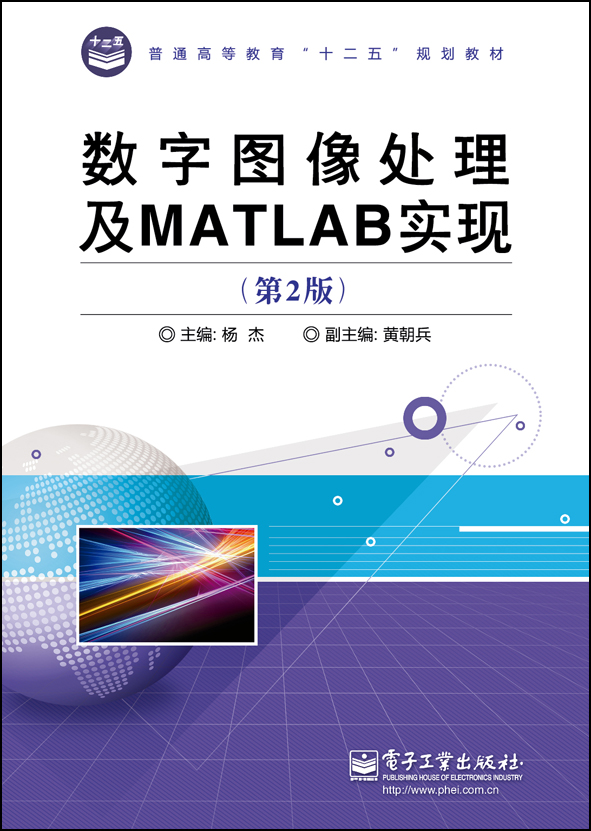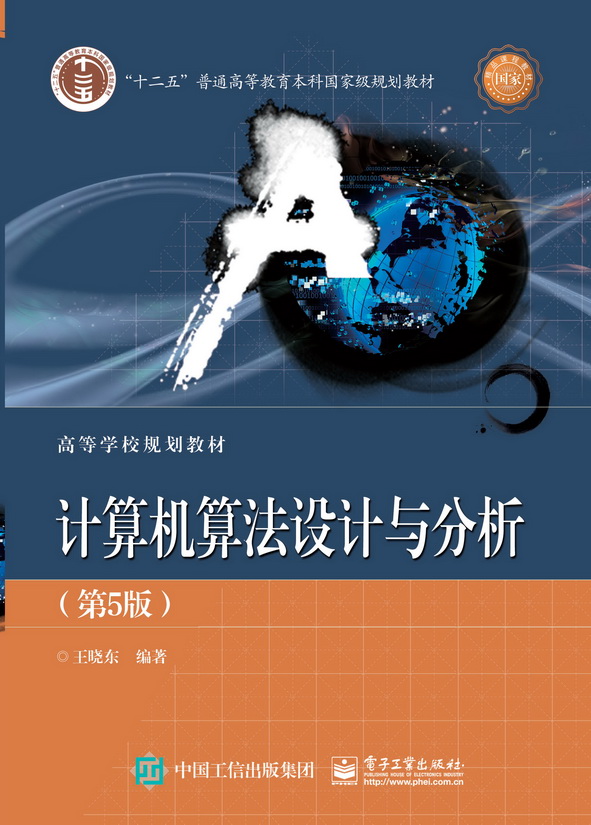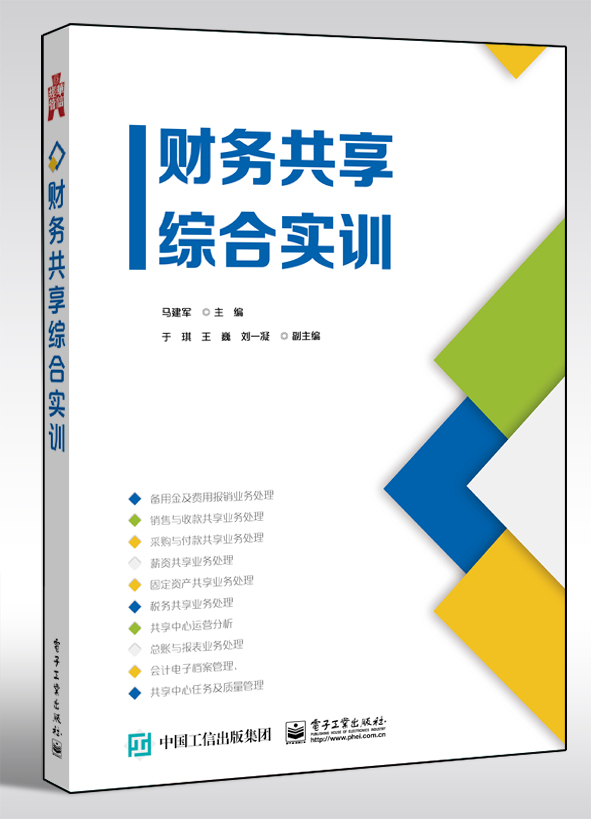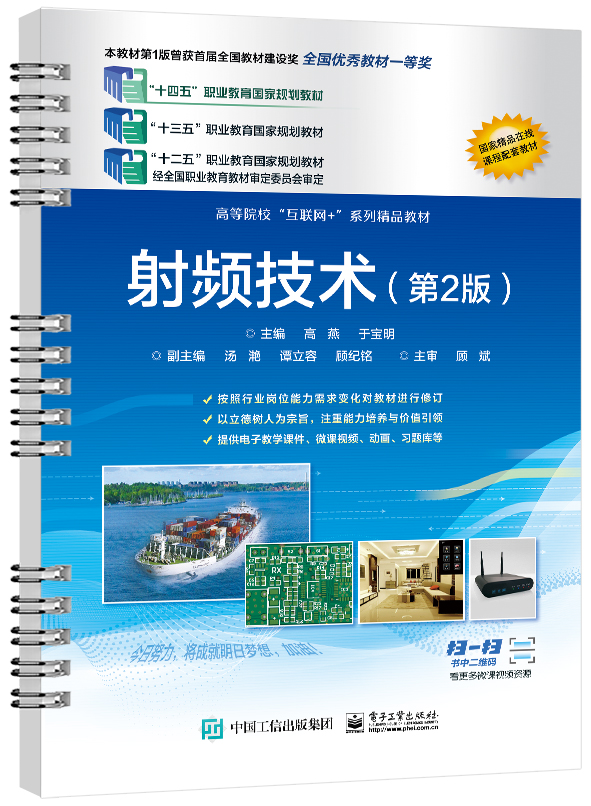数字图像处理及MATLAB实现(第2版)
作 译 者:杨杰
出 版 日 期:2013-08-01
书 代 号:G0209890
I S B N:9787121209895
图书简介:
本书是在2010年出版的教材基础上做了修改、补充和完善。书中主要介绍了数字图像处理的基础知识、基本方法、程序实现和典型实践应用。全书分3部分共10章。第1部分(第1~4章)介绍数字图像处理的基础知识;第2部分(第5~8章)介绍数字图像处理的各种技术;第3部分(第9~10章)介绍数字图像处理的扩展内容。在每章的内容安排上,都是从介绍问题的背景开始,接着讲述基本内容和方法,然后介绍实践应用(通过MATLAB软件编程),最后进行结果分析。本书内容系统性强,重点突出,理论、应用与实际编程紧密结合,理论与实例并重,同时也能满足双语教学的部分要求和对本课程的专业英语词汇的学习。
定价 38.0
您的专属联系人更多
联系人:刘小琳
电话:010-88254538
邮箱:liuxl@phei.com.cn
-
配 套 资 源图书特别说明:
本书资源
本书暂无资源会员上传本书资源
-
图 书 内 容
内容简介
本书是在2010年出版的教材基础上做了修改、补充和完善。书中主要介绍了数字图像处理的基础知识、基本方法、程序实现和典型实践应用。全书分3部分共10章。第1部分(第1~4章)介绍数字图像处理的基础知识;第2部分(第5~8章)介绍数字图像处理的各种技术;第3部分(第9~10章)介绍数字图像处理的扩展内容。在每章的内容安排上,都是从介绍问题的背景开始,接着讲述基本内容和方法,然后介绍实践应用(通过MATLAB软件编程),最后进行结果分析。本书内容系统性强,重点突出,理论、应用与实际编程紧密结合,理论与实例并重,同时也能满足双语教学的部分要求和对本课程的专业英语词汇的学习。图书详情
ISBN:9787121209895开 本:16开页 数:304字 数:488本书目录
目 录 第1章 概述 1 1.1 数字图像处理及特点(Characteristics and Processing of Digital Image) 1 1.1.1 数字图像与数字图像处理(Digital Images and Digital Image Processing) 1 1.1.2 数字图像处理的特点(Characteristics of Digital Image Processing) 2 1.2 数字图像处理系统(System of Digital Image Processing) 3 1.2.1 数字图像处理系统的结构(Structure of Digital Image Processing System) 3 1.2.2 数字图像处理的优点(Advantages of Digital Image Processing) 4 1.3 数字图像处理的主要研究内容(Research Content in Digital Image Processing) 5 1.4 数字图像处理的应用和发展 (Applications and Development of Digital Image Processing) 6 1.4.1 数字图像处理的应用(Applications of Digital Image Processing) 6 1.4.2 数字图像处理领域的发展动向(Future Direction in the Field of Digital Image Processing) 10 1.5 全书内容简介(Brief Introduction of This Book) 11 小结(Summary) 12 习题(Exercises) 12 第2章 数字图像处理的基础 13 2.1 人类的视觉感知系统(Visual System of Human Beings) 13 2.1.1 视觉系统的基本构造(Basic Structure of Visual System) 13 2.1.2 亮度适应和鉴别(Intensity Adaption and Identification) 15 2.2 数字图像的基础知识(Basics of Digital Image) 18 2.2.1 图像的数字化及表达(Image Digitalization and Representation) 18 2.2.2 图像的获取(Image Acquisition) 19 2.2.3 像素间的基本关系(Basic Relationships between Pixels) 22 2.2.4 图像的分类(Image Classification) 24 小结(Summary) 28 习题(Exercises) 28 第3章 图像基本运算 29 3.1 概述(Introduction) 29 3.2 点运算(Point Operation) 29 3.2.1 线性点运算(Linear Point Operation) 30 3.2.2 非线性点运算(Non-Linear Point Operation) 31 3.3 代数运算与逻辑运算(Algebra and Logical Operation) 33 3.3.1 加法运算(Addition) 33 3.3.2 减法运算(Subtraction) 35 3.3.3 乘法运算(Multiplication) 36 3.3.4 除法运算(Division) 37 3.3.5 逻辑运算(Logical Operation) 38 3.4 几何运算(Geometric Operation) 38 3.4.1 图像的平移(Image Translation) 39 3.4.2 图像的镜像(Image Mirror) 41 3.4.3 图像的旋转(Image Rotation) 42 3.4.4 图像的缩放(Image Zoom) 43 3.4.5 灰度重采样(Gray Resampling) 46 小结(Summary) 49 习题(Exercises) 49 第4章 图像变换 50 4.1 连续傅里叶变换(Continuous Fourier Transform) 50 4.2 离散傅里叶变换(Discrete Fourier Transform) 51 4.3 快速傅里叶变换(Fast Fourier Transform) 52 4.4 傅里叶变换的性质(Properties of Fourier Transform) 54 4.4.1 可分离性(Separability) 54 4.4.2 平移性质(Translation) 55 4.4.3 周期性和共轭对称性(Periodicity and Conjugate Symmetry) 57 4.4.4 旋转性质(Rotation) 58 4.4.5 分配律(Distribution Law) 58 4.4.6 尺度变换(Scaling) 59 4.4.7 平均值(Average Value) 60 4.4.8 卷积定理(Convolution Theorem) 61 4.5 图像傅里叶变换实例(Examples of Image Fourier Transform) 61 4.6 其他离散变换(Other Discrete Transform) 64 4.6.1 离散余弦变换(Discrete Cosine Transform) 64 4.6.2 二维离散沃尔什-哈达玛变换(Walsh-Hadamard Transform) 67 4.6.3 卡胡楠-列夫变换(Kahunen-Loeve Transform) 71 小结(Summary) 72 习题(Exercises) 73 第5章 图像增强 74 5.1 图像增强的概念和分类(Concepts and Categories of Image Enhancement) 74 5.2 空间域图像增强(Image Enhancement in the Spatial Domain) 75 5.2.1 基于灰度变换的图像增强(Image Enhancement based on Gray Levels) 75 5.2.2 基于直方图处理的图像增强(Image Enhancement based on Histogram Processing) 78 5.2.3 空间域滤波增强(Spatial Filtering Enhancement) 83 5.3 频率域图像增强(Image Enhancement in the Frequency Domain) 90 5.3.1 频率域图像增强基本理论(Fundamentals of Image Enhancement in the Frequency Domain) 90 5.3.2 频率域平滑滤波器(Frequency Smoothing Filters) 91 5.3.3 频率域锐化滤波器(Frequency Sharpening Filters) 94 5.3.4 同态滤波器(Homomorphic Filters) 95 小结(Summary) 98 习题(Exercises) 98 第6章 图像复原 100 6.1 图像复原及退化模型基础(Fundamentals of Image Restoration and Degradation Model) 100 6.1.1 图像退化的原因及退化模型(Causes of Image Degradation and Degradation Model) 101 6.1.2 图像退化的数学模型(Mathematic Model of Image Degradation) 103 6.1.3 复原技术的概念及分类(Concepts and Categories of Restoration) 104 6.2 噪声模型(Noise Models) 105 6.2.1 一些重要噪声的概率密度函数(Some Important Noise Probability Density Functions) 105 6.2.2 噪声参数的估计(Estimation of Noise Parameters) 108 6.3 空间域滤波复原(Restoration with Spatial Filtering) 109 6.3.1 均值滤波器(Mean Filters) 109 6.3.2 顺序统计滤波器(Order-Statistics Filters) 112 6.4 频率域滤波复原(Restoration with Frequency Domain Filtering) 115 6.4.1 带阻滤波器(Bandreject Filters) 116 6.4.2 带通滤波器(Bandpass Filters) 118 6.4.3 其他频率域滤波器(Other Filters in Frequency Domain) 118 6.5 估计退化函数(Estimating the Degradation Function) 120 6.5.1 图像观察估计法(Estimation by Image Observation) 120 6.5.2 试验估计法(Estimation by Experimentation) 120 6.5.3 模型估计法(Estimation by Modeling) 121 6.6 逆滤波(Inverse Filtering) 123 6.7 最小均方误差滤波-维纳滤波(Minimum Mean Square Error Filtering-Wiener Filtering) 124 6.8 几何失真校正(Geometric Distortion Correction) 127 6.8.1 空间变换(Spatial Transformation) 128 6.8.2 灰度插值(Gray-Level Interpolation) 130 6.8.3 实现(Implementation) 130 小结(Summary) 133 习题(Exercises) 134 第7章 图像压缩编码 135 7.1 概述(Introduction) 135 7.1.1 图像的信息量与信息熵(Information Content and Entropy) 135 7.1.2 图像数据冗余(Image Data Redundancy) 137 7.1.3 图像压缩编码方法(Coding Methods of Image Compression) 139 7.1.4 图像压缩技术的性能指标(Evaluation Index of Image Compression Approaches) 139 7.1.5 保真度准则(Fidelity Criteria) 141 7.2 无失真图像压缩编码(Lossless Image Compression) 142 7.2.1 哈夫曼编码(Huffman Coding) 142 7.2.2 游程编码(Run-Length Coding) 144 7.2.3 算术编码(Arithmetic Coding) 147 7.3 有限失真图像压缩编码(Lossy Image Compression) 149 7.3.1 率失真函数(Rate Distortion Function) 150 7.3.2 预测编码和变换编码(Prediction Coding and Transform Coding) 151 7.3.3 矢量量化编码(Vector Quantification Coding) 159 7.4 图像编码新技术(New Image Coding Technology) 161 7.4.1 子带编码(Subband Coding) 161 7.4.2 模型基编码(Model-Based Coding) 162 7.4.3 分形编码(Fractal Coding) 163 7.5 图像压缩技术标准(Image Compression Standards) 163 7.5.1 概述(Introduction) 163 7.5.2 JPEG压缩(JPEG Compression) 164 7.5.3 JPEG 2000 165 7.5.4 H.26x标准(H.26x Standards) 167 7.5.5 MPEG标准(MPEG Standards) 167 小结(Summary) 168 习题(Exercises) 169 第8章 图像分割 170 8.1 概述(Introduction) 170 8.2 边缘检测和连接(Edge Detection and Connection) 172 8.2.1 边缘检测(Edge Detection) 172 8.2.2 边缘连接(Edge Connection) 180 8.3 阈值分割(Image Segmentation using Threshold) 183 8.3.1 基础(Foundation) 183 8.3.2 全局阈值(Global Threshold) 184 8.3.3 自适应阈值(Adaptive Threshold) 189 8.3.4 最佳阈值的选择(Optimal Threshold) 189 8.3.5 分水岭算法(Watershed Algorithm) 190 8.4 区域分割(Region Segmentation) 192 8.4.1 区域生长(Region Growing) 192 8.4.2 区域分裂合并法(Region Splitting and Merging) 195 8.5 二值图像处理(Binary Image Processing) 196 8.5.1 数学形态学图像处理(Mathematical Morphology Image Processing) 197 8.5.2 开运算和闭运算(Open Operation and Close Operation) 201 8.5.3 一些基本形态学算法(Some Basic Morphological Algorithms) 202 8.6 分割图像的结构(Construction of Image Segmentation) 205 8.6.1 物体隶属关系图(Relationships between Objects) 205 8.6.2 边界链码(Edge Chain Code) 206 小结(Summary) 206 习题(Exercises) 207 第9章 彩色图像处理 209 9.1 彩色图像基础(Fundamentals of Color Image) 209 9.1.1 彩色图像的概念(Concepts of Color Image) 209 9.1.2 彩色基础(Color Fundamentals) 210 9.2 彩色模型(Color Models) 214 9.2.1 RGB模型(RGB Color Model) 215 9.2.2 CMY和CMYK模型(CMY and CMYK Color Model) 217 9.2.3 HSI模型(HSI Color Model) 218 9.3 伪彩色处理(Pseudocolor Image Processing) 221 9.3.1 背景(Background) 221 9.3.2 强度分层(Intensity Slicing) 222 9.3.3 灰度级到彩色变换(Transformation of Gray Levels to Color) 223 9.3.4 假彩色处理(False-Color Image Processing) 226 9.4 全彩色图像处理(Full-Color Image Processing) 227 9.4.1 全彩色图像处理基础(Basics of Full-Color Image Processing) 227 9.4.2 彩色平衡(Color Balance) 228 9.4.3 彩色图像增强(Color Image Enhancement) 230 9.4.4 彩色图像平滑(Color Image Smoothing) 233 9.4.5 彩色图像锐化(Color Image Sharpening) 234 9.5 彩色图像分割(Color Image Segmentation) 236 9.5.1 HSI彩色空间分割(Segmentation in HSI Color Space) 236 9.5.2 RGB彩色空间分割(Segmentation in RGB Color Space) 237 9.5.3 彩色边缘检测(Color Edge Detection) 239 9.6 彩色图像处理的应用(Applications of Color Image Processing) 242 小结(Summary) 245 习题(Exercises) 245 第10章 图像表示与描述 247 10.1 背景(Background) 247 10.2 颜色特征(Color Feature) 248 10.2.1 灰度特征(Intensity Feature) 248 10.2.2 直方图特征(Histogram Feature) 249 10.2.3 颜色矩(Color Moments) 251 10.3 纹理特征(Representation of Image Texture) 251 10.3.1 自相关函数(Autocorrelation Function) 252 10.3.2 灰度差分统计(Statistics of Intensity Difference) 253 10.3.3 灰度共生矩阵(Gray-Level Co-occurrence Matrix) 255 10.3.4 频谱特征(Spectrum Features) 258 10.4 边界特征(Boundary Feature) 261 10.4.1 边界表达(Boundary Representation) 261 10.4.2 边界特征描述(Boundary Description) 265 10.5 区域特征(Region Feature) 269 10.5.1 简单的区域描述(Simple Region Descriptors) 269 10.5.2 拓扑描述(Topological Descriptors) 274 10.5.3 形状描述(Shape Descriptors) 275 10.5.4 矩(Moment) 276 10.6 运用主成分进行描述(Use of Principal Components for Description) 279 10.6.1 主成分基础(Fundamentals of Principal Components Analysis) 279 10.6.2 主成分描述(Description by Principal Components Analysis) 282 10.7 特征提取的应用(Application of Feature Extraction) 284 10.7.1 粒度测定(Granularity Mensuration) 284 10.7.2 圆形目标判别(Circle Shape Recognition) 286 10.7.3 运动目标特征提取(Feature Extraction of Moving Object) 288 小结(Summary) 291 习题(Exercises) 291 参考文献 293展开前 言
前 言 近几十年来,由于大规模集成电路技术和计算机技术的迅猛发展、离散数学理论的创立和完善,数字图像处理技术正逐渐成为其他科学技术领域中不可缺少的一项重要工具。数字图像处理技术也在从空间探索到微观研究、从军事领域到工农业生产、从科学教育到娱乐游戏等越来越多的领域得到广泛应用。 针对数字图像处理课程概念多、内容抽象、读者入门较难的特点,本书以实践为导向,以实际应用为目标来介绍数字图像处理的基本概念和基础知识。数字图像处理主要研究内容包括图像变换、图像增强、图像复原、图像压缩、图像分割等,它是一门实用而综合性的边缘学科。本书在介绍数字图像处理技术基础理论及算法原理的同时,还特别注意如何用MATLAB软件编程实现一些常用的图像处理的典型算法,使读者能够深刻理解和掌握图像处理的理论和方法,并注重实际应用。 本书每章附有习题,帮助读者巩固所学的知识点;我们还编写了与本书配套的《数字图像处理及MATLAB实现—学习与实验指导》,便于读者学习和上机实验;另配有电子课件,便于教师教学和学生自学。 本书第1、2章由杨杰编写,第3、4章由李庆编写,第5、6章由郑林编写,第7章由聂明新和许建霞编写,第8章由王昱编写,第9、10章由黄朝兵编写。全书由杨杰统稿,黄朝兵和李庆对部分章节程序进行了整理。另外,李俊鹤、熊玮佳、钟琴、董天昳等参加了部分文字的录入、程序调试、插图和校对工作。在编写本书过程中参考了大量的图像处理文献,作者对这些文献的作者表示真诚的感谢。 本书的编写得到武汉理工大学信息工程学院的大力支持,作者在此表示衷心感谢。 由于作者水平有限,书中难免存在缺点和疏漏之处,恳请读者批评指正。 编 者 2013年5月展开作者简介
本书暂无作者简介 -
样 章 试 读本书暂无样章试读!
-
图 书 评 价 我要评论








